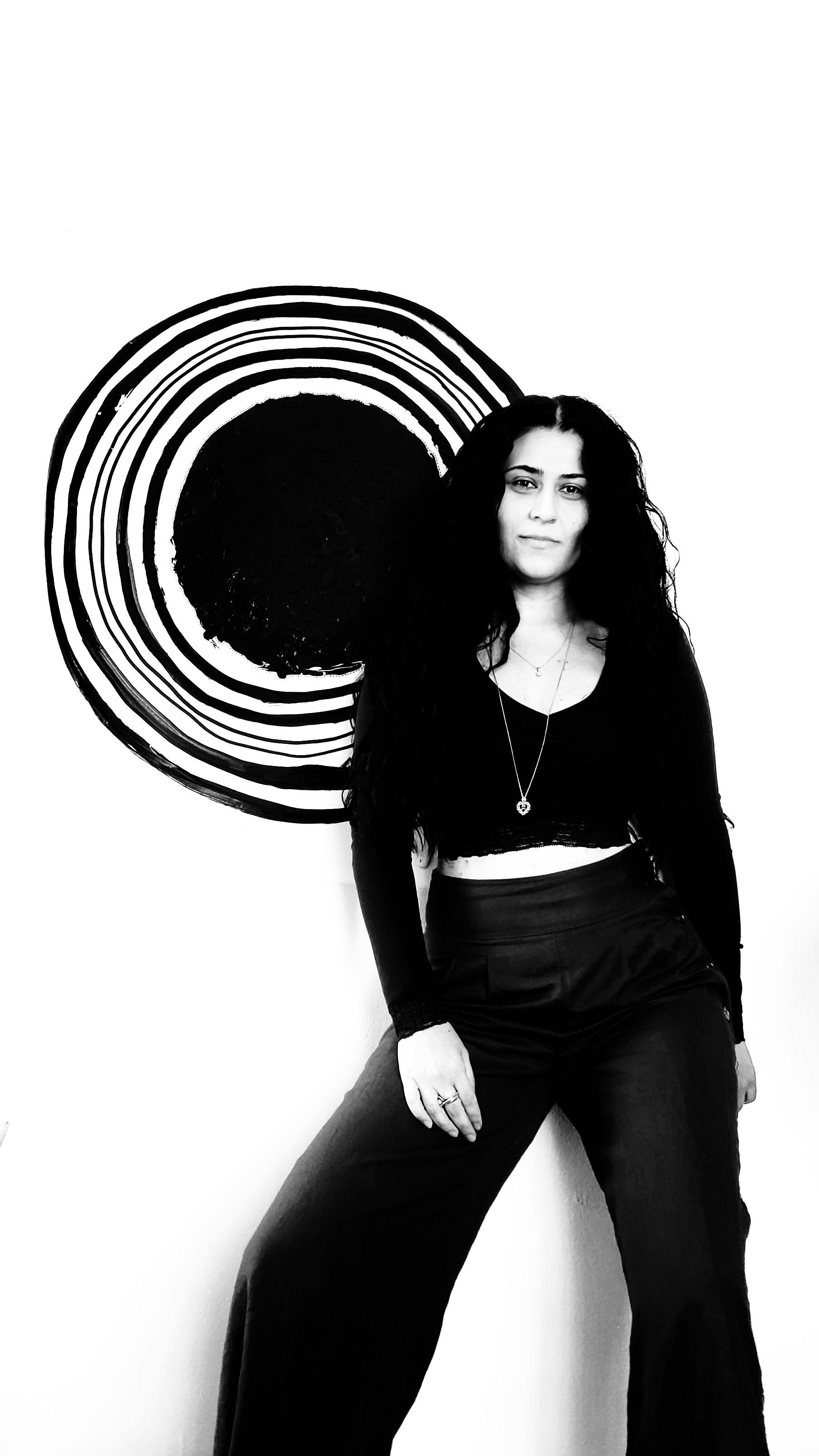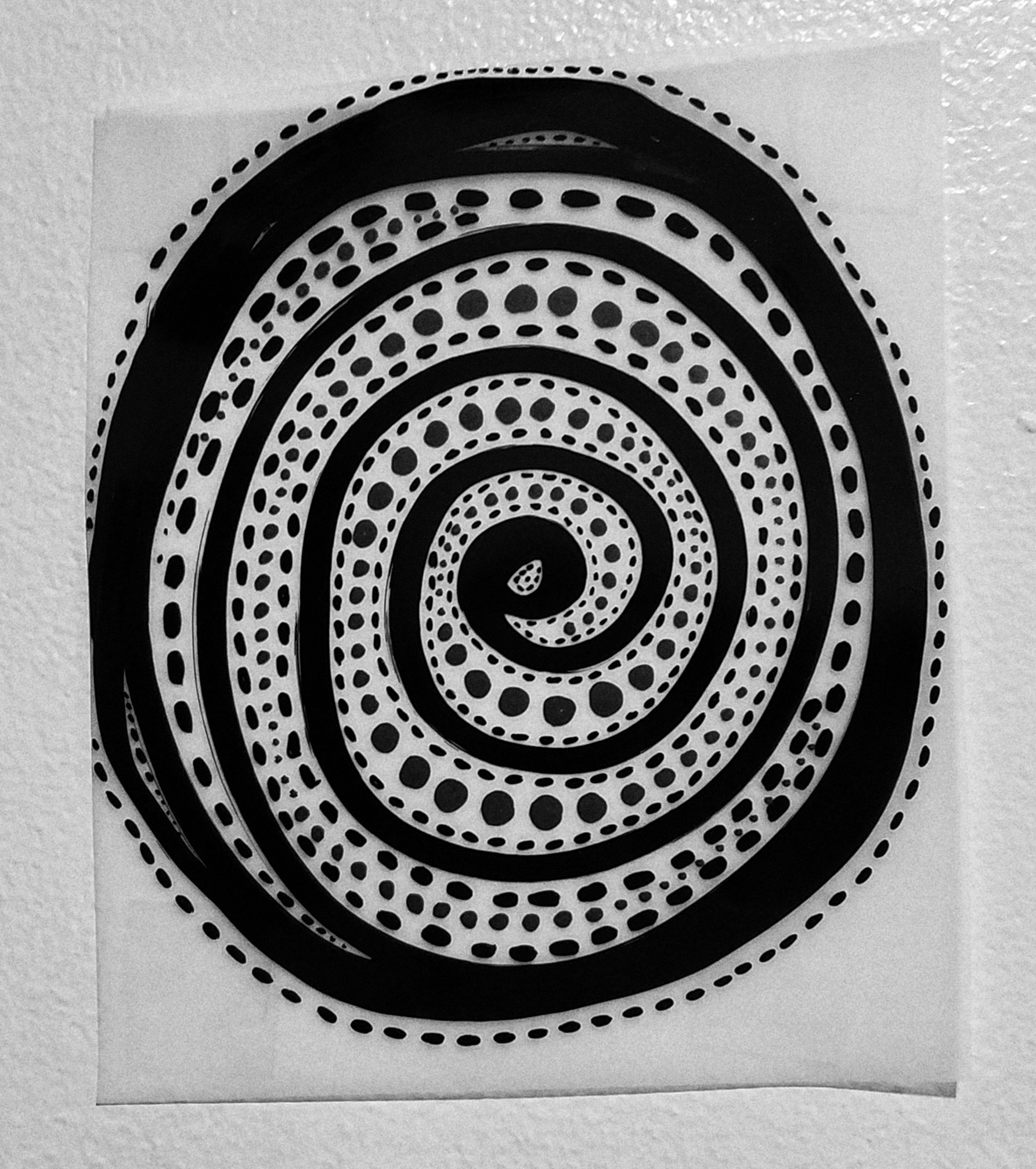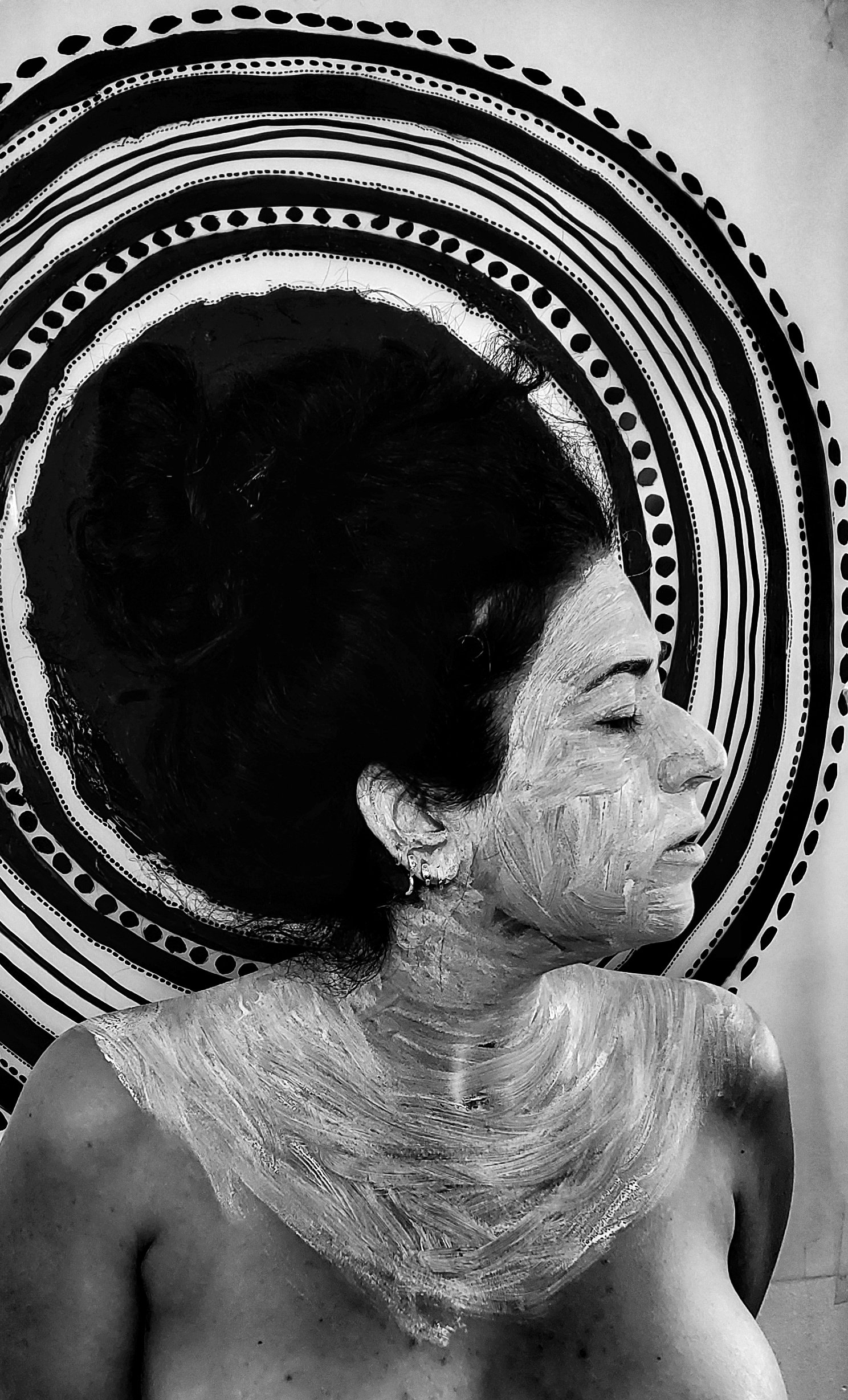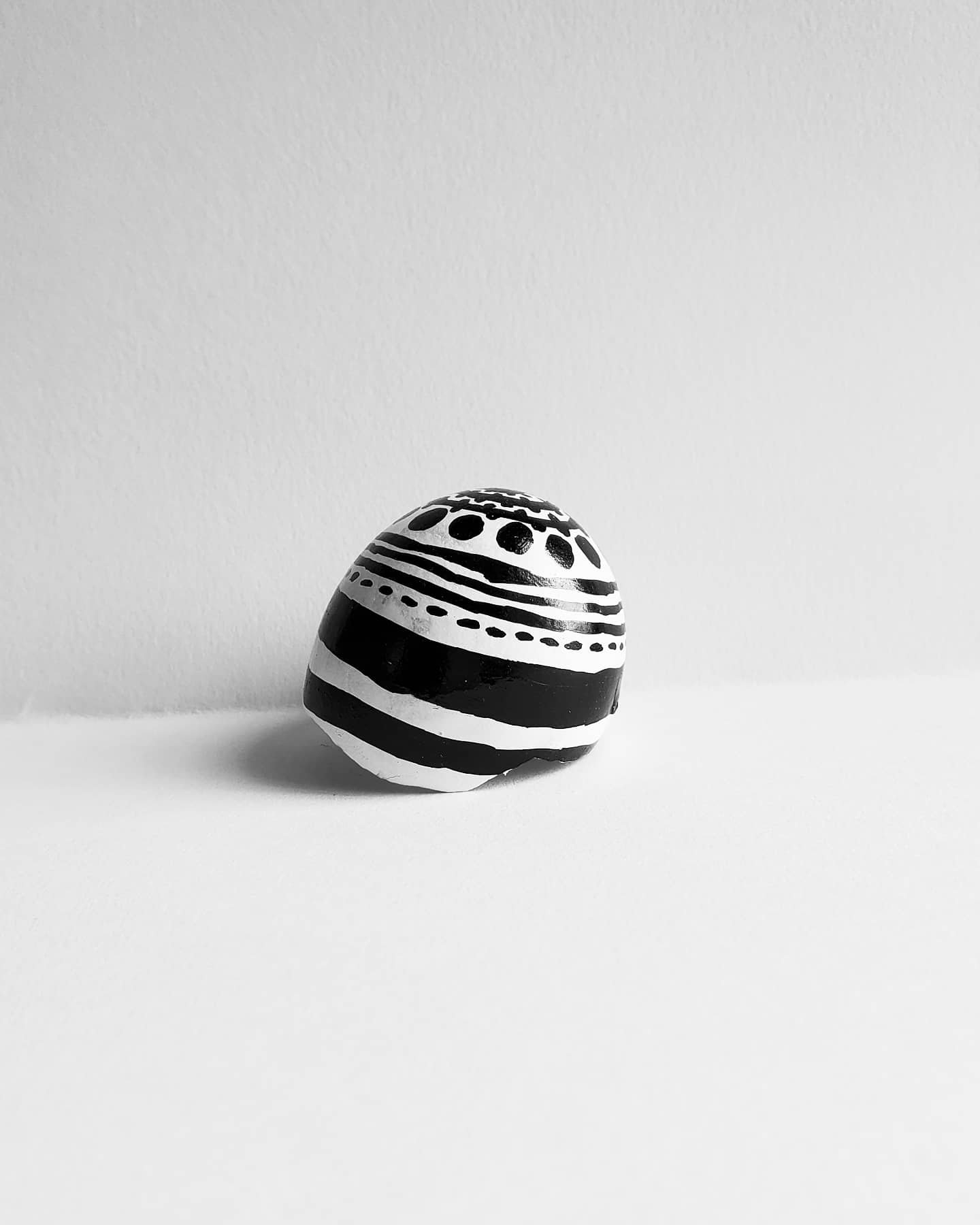
ANNA KOSTANIAN
A conversation with the Los Angeles-based artist about her artistic process and perspective as an Armenian woman.
Interview by Natalie Varbedian
Anna Kostanian is a Los Angeles-area artist originally from Yerevan, Armenia. Her work communicates themes of commitment, evolution, and ancestry. She paints meticulous organic geometry composed of energetic patterns, often painted on the human body and photographed. Kostanian has had numerous exhibitions internationally and locally, including Armenian Arts (2017), Coagula Curatorial (2018), and Athenaeum Music and Arts Library (2022). Her work will be on view in the upcoming group exhibition Discovering Takouhi: Portraits of Joan Agajanian Quinn at The Armenian Museum of America, opening June 16, 2022. Anna studied painting at Otis College of Art and Design.
Tell me a little bit about how you first got into creating art.
I am not sure how or why I remember this, but I was only a few years old back in Armenia and one of our close neighbors was looking at a drawing/scribble I had done. He looked at my mom and said, “This kid’s going to be an artist.” Fast forward a few years, my second-grade teacher communicated with my parents that my drawings were quite good and maybe they can look into taking me to art classes.
Palm, 2021, photo document
Untitled, 2018, ink on dura-lar, 14 x 17 inches
How much of your Armenian Identity has affected your approach to art?
I’d say quite a bit. So much of my work has to do with the female body and embracing it. I think it’s because I come from a traditional and religious family where the female body was never discussed or acknowledged. But that’s more of a female experience than an Armenian experience… maybe.
Untitled, 2019, photo document
Pomegranate, 2020, photo document, paint on pomegranate, 4 x 4 inches
Who or what are some of your artistic inspirations?
I love works by Mona Hatoum, Kiki Smith, and Tara Donovan. I traveled to Denver just to see one of Donovan’s exhibitions. Other artists are Vija Celmins, Darel Carey, and Laolu. However, more of my inspiration comes from empowering stories, music, and enriching conversations with others. Being in an elevated emotional and mental state drives my desire to create.
Untitled, 2018, ink on dura-lar, 14 x 17 inches
Untitled, 2019, photo document, pelvic body painting, 14 x 17 inches
Is there a particular experience in the LA art scene that holds significance for you?
Currently, I am very drawn to murals—LA is home to some of the most iconic murals. I like driving around and taking pictures of them. I enjoy their scale and how you have access to some amazing work, outside the traditional art viewing facility. Plus the pandemic and a year-long stay home restriction, it's forced us all out and looking for different ways to express and display our work. I’m seeing a trend in more public art.
Combination Paintings (installation view), 2018
In terms of aesthetics, what drew you to the use of circles and your overall design choices?
I think the circles chose me. Back in my 20s, I would have a recurring dream where I would wake up to find myself in a stark, bright white place, and then out of nowhere, a black spot would drop from above. At first, slowly, it would quickly pick up speed, and my entire vision would go from white to black. That’s usually when I would wake up sweating and out of breath. After a couple of years, the dream stopped coming to me. I had forgotten about them until a few years ago when memories of that dream came into my consciousness. Now all I can do is try to recreate that experience, but it’s never quite the same, and it’s never-ending…
Self Portrait, 2022, photograph, 18 x 24 inches
What is the significance of your consistent use of black and white?
Aside from my dream being black and white, black and white offer a sense of simplicity, calmness from the storm, a chance to connect the dots and figure out the message.
Untitled, 2018, photo document, hand holding painting, 14 x 17 inches
Untitled, 2018, ink on dura-lar, 14 x 17 inches
The placement of your designs on the female body is very striking. What were you trying to achieve with this form of application?
My female body paintings are a sub-series within the Nightmare Series, called Nightmare Goddesses. The nightmare goddesses to me are soldiers carrying the burden of womanhood. Each female body has a story to tell, and I am a storyteller. For example, in the piece titled Alexandra—a woman reached out to me on IG and told me how she has been following my work for some time now. Her sister, Alejandra, is a cancer survivor and she would love to surprise her with a painting session with me. It was a story near and dear to my heart, so I jumped at the opportunity. It was an amazing experience all-around. We met at my studio, and as I painted, Alejandra shared her story about being a single mother surviving cancer, and her journey, while Univision recorded and then aired the entire experience.
The female body goes through so much, whether it’s childbearing, monthly excruciating menstrual cramps, social standards (as referenced in my piece for Perceive Me—Kristine Schomaker), or the different types of illnesses that attack the female body. My mom is also a cancer survivor, and the way she marched like a soldier through the mastectomy and the chemo and the radiology—she truly is my hero. And right when she finished treatment, she jumped right into taking care of my dad as we found out he had cancer, too. She just turned 70 and she’s amazing.
Alexandra, 2019, photo document, 18 x 24 inches
Shield, 2019, photo document, chest body paint
Can you tell me more about your newest approach to the Nightmare Series?
I’ve been working on my Nightmare Series for some time now. It has been a process that is still evolving as I expand to different types of canvases: both natural, living, breathing subjects and inanimate objects that were maybe once part of a living organism. It all goes back to my need to tell stories.
Untitled, 2018, ink on dura-lar
Rose Petal, 2021, photo document, ink on rose petal
Egg Shell, 2021, photo document, ink on eggshell
What is a message you want your audience to absorb through your work?
It’s a language, a visual vibration and it comes from a place of strength and vulnerability. But it’s deep, and it is dark. Each dot and each circular motion is a language within a language. It’s a way of communication. It’s rooted and comes from a place of familiarity. The process is very intuitive—I don’t think, I don’t feel, I just write. It’s like I shut off, and something inside of me takes over. I think of them as stories at times—a combination of words or even maps taking us on a journey, maps of the unknown waiting to be spotted.
Do you have any artistic goals for the future that you would like to share?
There is more of the Nightmare Series waiting to happen to everyone—stay tuned.
Upside down, 2018, photograph, 7.5 x 10 inches















